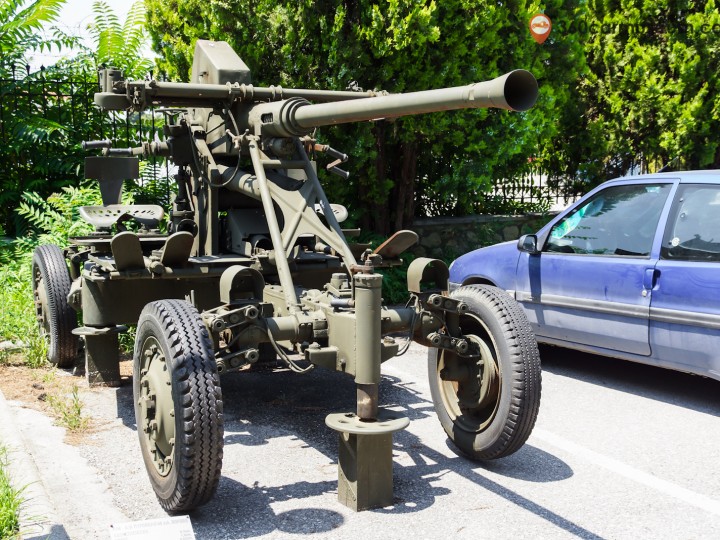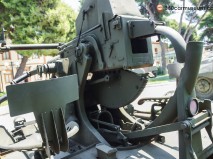1934 Automatic anti-aircraft gun caliber 40 mm Bofors L60
The Bofors 40 mm gun, often referred to simply as the Bofors gun, is an anti-aircraft/multi-purpose autocannon designed in the 1930s by the Swedish arms manufacturer AB Bofors. It was one of the most popular medium-weight anti-aircraft systems during World War II, used by most of the western Allies as well as by the Axis powers. A small number of these weapons remains in service to this day, and saw action as late as the Gulf War.
In the post-war era the original design was not suitable for action against jet powered aircraft, so Bofors introduced a new model of significantly more power, the 40 mm L/70. In spite of sharing almost nothing with the original design other than the calibre and the distinctive conical flash hider, this weapon is also widely known simply as "the Bofors". Although not as popular as the original L/60 model, the L/70 remains in service to this day, especially as a multi-purpose weapon for light armored vehicles, as on the CV 90.
Bofors itself has been part of BAE Systems AB since March 2005.
Designer : Bofors Defence
Designed : 1930
Manufacturer: Bofors Defence (1932–2000)
United Defense Industries (2000–2006)
BAE Systems AB (2006 onwards)
Produced : 1932–present
Variants : See variants
Weight : L/60: 2513 kg
Crew: dependent on use
Shell: Complete round: - L/60 40×311mmR (1.57 in)
Caliber : 40 mm L/60–70 (actual length varies from 56–70 calibers, based on model)
Carriage : 522 kg (1,151 lb)
Elevation : L/60: -5°/+90° (55°/s)
Traverse : Full 360°
L/60: 50°/s
Rate of fire : L/60: 120 round/min
Muzzle velocity : L/60: 881 m/s (2,890 ft/s)
Maximum firing range : L/60: 7,160 m (23,490 ft)















